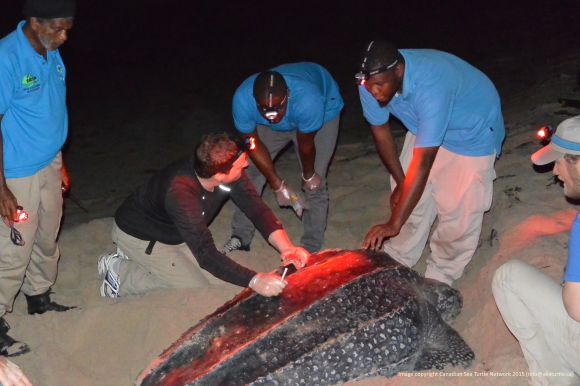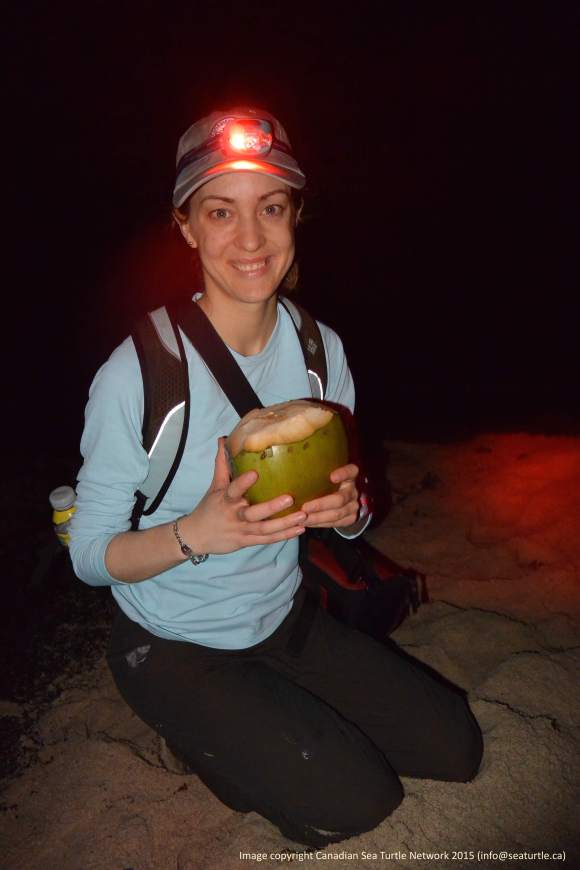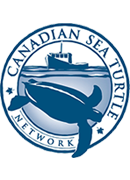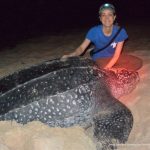This is the second part of Kayla Hamelin’s journal of her time working on the nesting beach with leatherbacks in Trinidad last spring. Kayla is the CSTN’s coordinator of conservation and educational outreach. You can read the first of her impressions of Trinidad here.
Notes from the Field (Trinidad, Part 2)
Everyone is incredibly friendly and welcoming here. Our meals at the guesthouse are prepared by local women, and the food has an interesting blend of Indian, Caribbean, and other flavours that reflect Trinidad’s diverse cultural history. Plus the food is tasty and hearty—perfect for field-work appetites! We have bonded with the children who spend time at the guesthouse during the day. I am affectionately called “auntie” by one in particular. We play games, and “Angry Birds” on my iPhone is a popular request. Considering how different this place is from anywhere else I’ve lived or travelled, it’s surprisingly easy to settle in and feel at home.
On our second night on the beach, we had a special task: training some of the Nature Seekers staff to deploy satellite tags. These are the same types of instruments that we have used to tag and follow Beverly, Asha and Christie. Instead of deploying them from our field boat and remotely following the turtles to the beach, we would like to do the opposite—have them deployed on a turtle here on the beach (ideally one with a history of coming up to the Canadian foraging grounds) so we can follow her in her post-nesting period.

Learning how to satellite tag a nesting leatherback turtle.
Turtle scientist, Mike James, and CSTN turtle technician, Devan Archibald, introduced the team to the equipment at the Nature Seekers office and then demonstrated how to set up the tag on an actual turtle that night on the beach. The training was successful and our tags are in good hands with the Nature Seekers. Now it is just a matter of waiting for the right turtle candidate: ideally a “CAN” turtle. The C-A-N code on a turtle’s flipper tags indicates she was tagged by us in Canadian waters. We might even find a turtle with a Canadian connection during this trip and be able to take part in the tag deployment!
We have worked with a good number of turtles so far and have been happy with the progress of our work. We have also encountered an adorable possum by the edge of the forest; watched bioluminescent microbes flash their blue-ish light as we disturbed the mats of seaweed on the beach that harbour them; and taken a “snack break” to sip coconut water straight from the fruit. I can’t wait to see what the coming days (and nights!) have in store.

Beach snack!


I did this on my last trip to Trinidad and it was very vital using to see these sea creatures bring together people and I applaud the Canadian government decision to work with Trinidad and Tobago on leather back conservation .